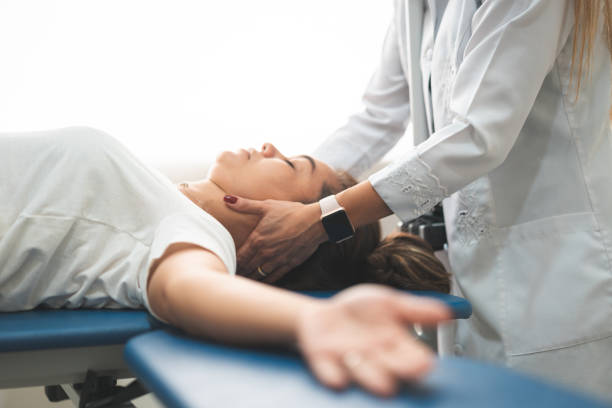Understanding Pulmonary Hypertension and the Role of Breathing Exercises
Pulmonary hypertension (PH) is a chronic and progressive condition in which the arteries in the lungs become narrowed, stiff, or blocked, causing elevated pressure in the pulmonary circulation. This makes the heart work harder to pump blood through the lungs, potentially leading to right heart strain and serious complications over time. According to the Pulmonary Hypertension Association and the National Heart, Lung, and Blood Institute, PH does not have a cure, but treatments and lifestyle modifications can slow its progression and help patients manage symptoms effectively. Breathing exercises are increasingly recognized as a supportive strategy for PH patients.

Pulmonary hypertension (PH) is a condition where blood pressure in the lung arteries is higher than normal, forcing the right side of the heart to work harder. While medications target the underlying vascular changes, daily habits—particularly breathing exercises and structured activity—can support symptom control. Understanding when oxygen is needed, which exercises are appropriate, and how environment influences breathlessness can make self-management safer and more effective.
This article is for informational purposes only and should not be considered medical advice. Please consult a qualified healthcare professional for personalized guidance and treatment.
Breathing Exercises for Pulmonary Hypertension
Breathing exercises for pulmonary hypertension aim to reduce breathlessness, improve ventilation efficiency, and ease anxiety that can worsen shortness of breath. Diaphragmatic breathing encourages abdominal expansion on inhalation, helping distribute air more evenly in the lungs. Pursed-lip breathing—inhale through the nose, exhale slowly through slightly closed lips—can decrease the sensation of air hunger by keeping airways open longer during exhalation. Gentle, coordinated breathing during activities such as walking or light household tasks can help avoid breath-holding, which may increase chest pressure and strain the heart. Avoid vigorous breath-hold practices or high-intensity respiratory training unless prescribed and supervised, as these can provoke dizziness or undue cardiovascular load.
Pulmonary Hypertension Oxygen Therapy: When and Why
Oxygen therapy is used in PH to correct low blood oxygen levels (hypoxemia), particularly at rest, during sleep, or with exertion. The aim is to maintain oxygen saturation within a target range set by a clinician, reducing hypoxic pulmonary vasoconstriction that can further elevate lung pressures. Not everyone with PH needs supplemental oxygen; eligibility typically depends on measured saturations or arterial blood gases. Oxygen therapy does not reverse PH, but it can improve exercise tolerance, reduce fatigue and headaches linked to low oxygen, and support organ function. Decisions about duration (continuous vs. activity-only) and flow rates should follow individualized testing, including exertional assessments.
Oxygen Therapy Pulmonary Hypertension: Safety and Devices
Common oxygen delivery options include stationary concentrators for home use, portable concentrators for mobility, and compressed gas or liquid oxygen systems where available. Flow may be continuous or pulse-delivered, and some users require higher flows during activity or sleep. Practical safety steps matter: keep devices away from flames, avoid smoking around oxygen, and secure tubing to reduce tripping risks. Humidification can help prevent nasal dryness at higher flows, and regular maintenance ensures reliable output. Monitoring with a pulse oximeter during typical activities can help you and your care team fine-tune settings. Travel planning—battery reserves, airline policies, and altitude considerations—should be discussed in advance to avoid sudden drops in oxygen levels.
Exercise Based Rehabilitation Programmes for Pulmonary Hypertension
Supervised, exercise based rehabilitation programmes for pulmonary hypertension combine education with tailored physical training to improve functional capacity and quality of life. Protocols often include low-to-moderate intensity aerobic intervals (such as treadmill or cycle ergometer), light resistance training for major muscle groups, and flexibility work. Warm-up and cool-down periods help prevent sudden heart rate and pressure swings. Programmes are individualized based on testing like the six-minute walk test and medical stability. Warning signs—such as chest pain, dizziness, syncope, palpitations, or marked desaturation—warrant stopping and reassessment. Over time, participants may see improved endurance, reduced breathlessness during daily tasks, and better confidence pacing activities. Home-based plans can extend benefits, provided they are set up with clear guidance and check-ins.
Best Place to Live with Pulmonary Hypertension?
There is no single best place to live with pulmonary hypertension, but environment can influence symptoms and safety. High-altitude locations have lower oxygen levels, which can aggravate hypoxemia; if relocation or travel to altitude is unavoidable, advanced planning, oxygen availability, and monitoring are important. Cleaner air and lower pollution levels may reduce respiratory irritation, while stable, moderate climates can make outdoor activity more manageable than extremes of heat or cold. Proximity to specialist centers, emergency services, and local services such as pulmonary rehabilitation also matters for continuity of care. Home adjustments—like minimizing stair climbs, improving ventilation, and arranging living spaces to reduce exertion—can make a meaningful difference regardless of city or country.
How breathing strategies fit into overall care
Breathing techniques work best as part of a broader plan that includes prescribed medications, vaccinations, sleep optimization, nutrition, and mental health support. Coordinating inhalation with movement—exhale on effort during lifting, inhale during recovery—can help manage effort levels. Short activity bouts with rest intervals may be better tolerated than continuous exertion. Keeping a simple log of symptoms, oxygen saturation (if advised), and perceived exertion can guide pacing and help clinicians adjust therapy. Any new or worsening symptoms, especially fainting or chest discomfort, should prompt timely medical review. For many people, a blend of tailored exercise, appropriate oxygen therapy, and consistent breathing practice offers steady, sustainable progress.
Putting it together
Breathing exercises and oxygen therapy address different aspects of pulmonary hypertension: one retrains how you breathe during activity, the other corrects low oxygen levels when present. Both are adjuncts, not replacements, for disease-specific treatments. With careful supervision, exercise-based rehabilitation builds functional reserve and confidence, while environmental choices and home setup can reduce daily strain. Aligning these elements with your clinical plan helps make symptoms more manageable and daily life more predictable.




